
Learn To Take Photos of Water

Just try to keep the camera out of it.
Considering water is transparent, it takes a
surprisingly signifigant role in photography
Water Falls
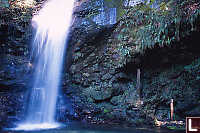
Waterfalls are probably the most common
subject in water photos. Waterfalls can be
surprisingly hard to photograph well. Ideally you want to make a
deliberate choice about how blurry the water will appear and where the
brightest part of your image is. Like much of
wildlife/natural photography,
the scene you are presented is what you have - take it or leave it - so
a
truely great waterfall photo often relies on chance lighting.
Where your skill comes in is composition and exposure.

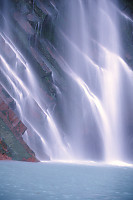
Composition for water falls seems to be pretty much the same as
composition for photography
in general. Exposure is the challenge. Waterfalls,
depending on how close you are, how fast the water is moving (a
function of height) and how much "veil" you want, generally expose well
in the .5 seconds to 4 seconds. The only way to be really sure is
to take the shot and look it - OK on a digital, painful on film.
Finally, consider brightness. If white water makes up a
substantial part of your picture, you may have to over expose.
Water Splash at Different Speeds
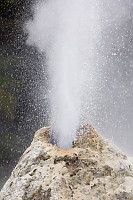
Perhaps the most common "special effect" in
photography is to capture water drops frozen in air by using a fast
shutter speed. While the long blurring veils
of water are generally shot at greater than half a second (4 seconds
being long), frozen action generally happens beyond about 1/250th of a
second. Again, lighting (the proportion of the scene that is
white) can effect your meter reading.
Water as a Reflector
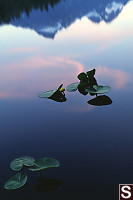
Two things
need happen - you have to be on placed to
receive the
reflected image (Brewsters angle for the physics inclined), and the
light source generally has to be brighter than the ambient light
falling on the water surface. It helps if the water is still, but
it isn't a requirement.
Water as Receiving surface
Because humans have expectations about what colour water should
be, it can be effective at demonstrating what colour was actually
seen. Sunsets are particularly problematic - the light for a few
minutes is beautiful, but if you have nothing notable to photograph,
your opportunity is wasted. Add water, you have "kept" your light.
Water as a Transport Mechanism
The most common example of this is leaves on a slow stream or pedals on
a pool. These are long exposures (>4 seconds, sometimes 20 or
30 seconds) so you
may require a neutral density filter along with slow film and a small
apature. You want to ensure it's a bright thing over a dark
background because you can't have motion blur of a dark thing over a
bright background (thank gamma).
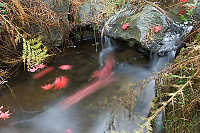
Oh, and your probably want to put the stuff in the water yourself
because otherwise you will be waiting forever.
Long Exposure Wave Wash

Where you have
substanial
waves (generally ocean), you can get a nice
fog effect. Depending on the strength of the waves, you need a
several second exposure to capture a few washes. Having light on
the water helps.
Use Water as a Lens
Water can be used as a lens. With enough macro length, you can do
things with that.
Tags: sunset(4), waterfall(3), Japan(2), wave(2), long exposure(2), reflection(2)
People: Stephen(1)
From: John Harvey Photo > Learn Photography > Learn Water Photography Photography
This an amazing site, It's really helpful. Thanks alot
soso
Sunday, June 24th, 2007 at 11:47:59
wonderful tips, thank you!
Rebecca Gruhl
Friday, June 29th, 2007 at 07:34:49
It was very helpful and it had great examples. Thank you!
Joshua Lewis
Tuesday, November 13th, 2007 at 12:42:23
Hi, I am trying to learn night photography and I stumble onto your site. Great photos and very grateful for the tips.
Kesar
Thursday, April 24th, 2008 at 20:58:11
Thanks very much for the worthy information i Realy appreciate your works,,,
Adeeb Ghlilat
Wednesday, July 23rd, 2008 at 12:01:35
Great tips on composition! It is very helpful for beginner photographers like me.
Uncool_Guys
Wednesday, November 5th, 2008 at 22:27:44
Great site....I am getting back into photography after a several year hiatus. Your site has re-enforced many things that I was foggy about as well as picking up several new tips. Thank you for taking the time to put this site together. I know they are a great deal of work.
John
John
Wednesday, December 3rd, 2008 at 12:07:35
This is a very informative site. Great tips!
Rabacas
Monday, December 22nd, 2008 at 23:44:44
So many questions were answered on this site. Thank you so much!
Bennie
Tuesday, December 23rd, 2008 at 15:29:19
awesome! :D so much learned :D
Geli
Saturday, January 15th, 2011 at 06:11:19
This site has a very simple layout, which makes it easy to scroll through and learn from, I am a young photographer currently starting a project specifically on water. This helped me a lot to understand the different settings and combinations to use with my work, thank you for taking the time to set it up :)
Carys
Wednesday, November 23rd, 2011 at 03:52:21
Great tips in there, absolutely love some of the waterfalls shots. Thanks :)
Jon
Saturday, June 6th, 2015 at 23:53:06
Last Modified Tuesday, June 9th, 2009 at 00:56:48 Edit
Copyright and Contact Information.






